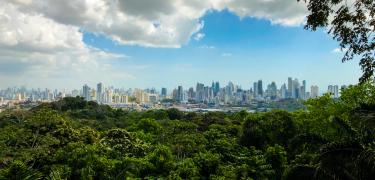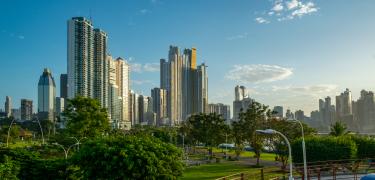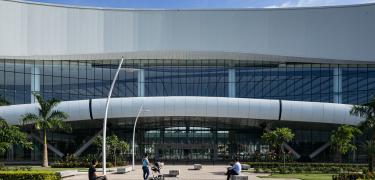Guna
The most visible of Panamá’s indigenous communities are the members of the Guna tribe. Around 62,000 people living along the eastern Caribbean coast, and on 49 of the 400 islands belonging to the Guna Yala archipelago (also known as the San Blas Islands), belong to the Guna community. Historians say that the Guna people may have migrated to San Blas after the 16th century, where the ocean has become a large part of their livelihood. In fact, thanks to its coastal location, Guna Yala is one of the biggest coconut plantations in the world.
As a proudly independent group, the Guna people maintain semi-autonomous status within Panamá, and have been welcoming tourist visitors for decades. In addition, the Guna have a long history of mercantilism and international trade, with an economy that’s based on fishing, agriculture and clothing manufacturing. In fact, economic success and self determinism is a strongly held value among the Gunas, and one of the reasons why they have been able to function independently for so long.
Perhaps the most well-known aspect of Guna culture is the “mola,” an intricately woven cloth panel that adorns the front and back of the traditional dresses worn by female members of the group. The colorful designs on the molas typically depict sacred animals or a cosmogenic origin story, based on their three-principle belief system that accounts for God, Nature and the Cosmos. To the Guna People, humans and nature are part of the same entity, and thus the rules of nature apply equally to human life from birth to death. These molas are stunning works of art that are revered the world over, and can be purchased in the Guna villages or at local markets.
A visit to the Guna communities means a trip to the picture-perfect San Blas islands. A stay in Guna Yala, or San Blas, as it’s also known, won’t look like a commercial island vacation. Instead, you can expect to sleep in thatched huts without heated water, or you can rent a tent, hammock, or space on a sailboat. While you’re there, you’ll get to learn about Guna culture, and try some of their distinct seafood-based cuisine, which typically consists of a fish and plantain soup called Tule Masi, or red-snapper (caught the same day) and coconut-flavored rice.
Getting There
Visitors can reach the San Blas Islands from Panama City by making a 3-hour trip in a 4x4 vehicle, and then a short boat ride to the island of your choice.






